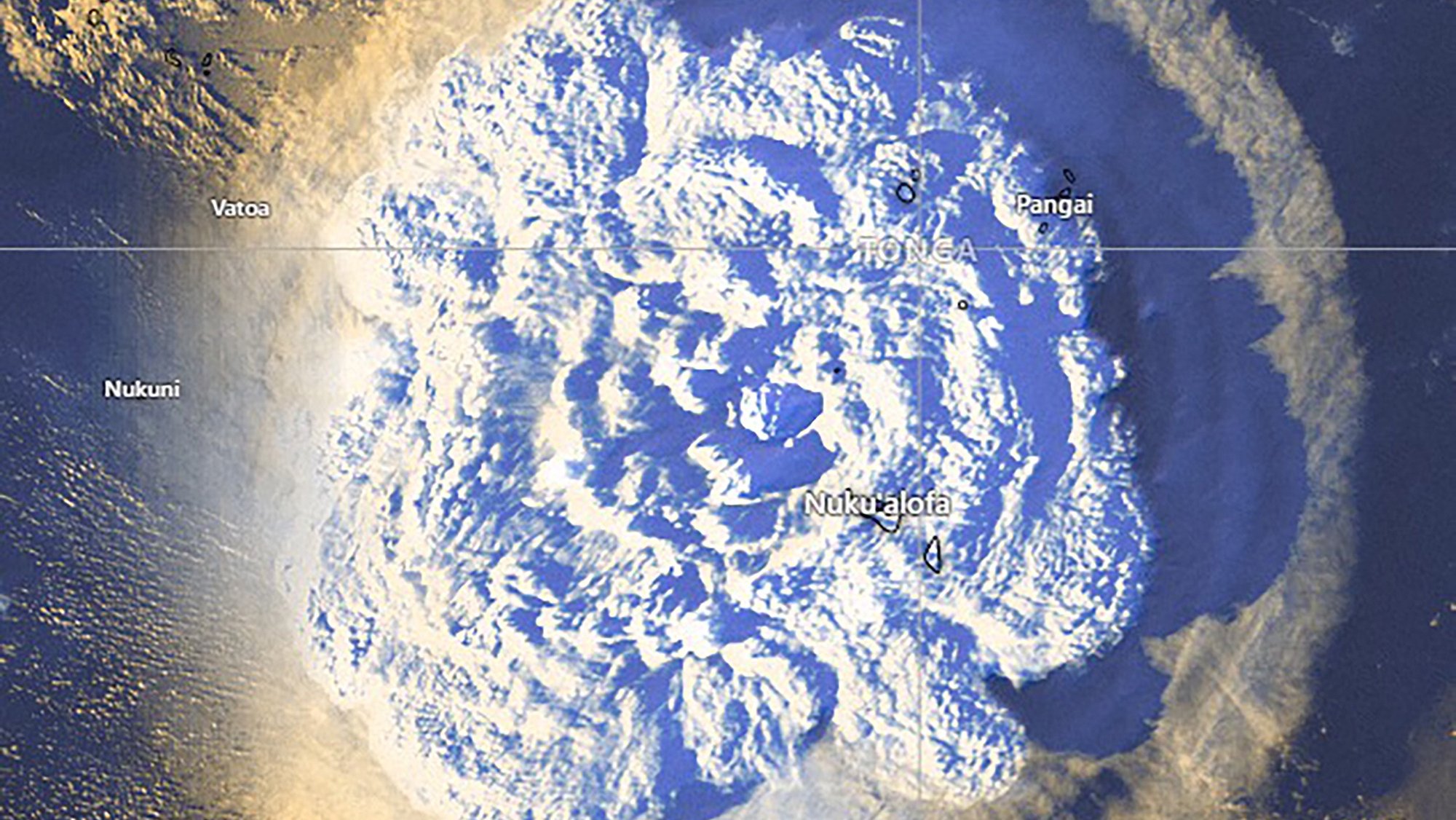The eruption of the Hunga Tonga-Hunga Ha’api submarine volcano in the middle of the Pacific Ocean in January 2022 was one of the most explosive volcanic events of the modern era, according to a study in the journal Nature. The eruption was unique in magnitude and speed, creating a ash column that reached more than 50 kilometers above the Earth. The impact was felt in many parts of the world: in portugal there was a rise in sea levelwhich reached 40 centimeters, in Ponta Delgada, in the Azores.
But a new study in the Geophysical Research Letter has revealed another unprecedented aspect about this underwater volcano: An explosion that injects so much water vapor into the atmosphere has never been observed.
Tonga’s violent eruption released not only ash, but also large amounts of water vapor into the atmosphere, which “is not surprising given that the Hunga Tonga-Hunga Ha’apai caldera was previously 150 meters below sea level.” said the study reads. It is surprising that this introduction of water vapor be able to change the Earth’s climate to the point of warming it in the next five yearsalso affecting the ozone layer.
The massive explosion injected water vapor at altitudes of up to 53 kilometers. Unlike previous strong eruptions, this event may not cool the surface, but could warm it due to excess water vapor.”
Using the Microwave Limb Sounder, a device aboard NASA’s Aura satellite, the study authors were able to analyze the amount of water and sulfur dioxide that the eruption sent into the atmosphere. The study estimates that 146 billion liters of water reached the stratosphere — the equivalent of 58,000 Olympic swimming pools. “We estimate that the excess water vapor is equivalent to about 10% of the amount of water vapor that normally resides in the stratosphere,” the study authors say.
East excess water vapor can remain in the stratosphere for five years — Contrary to what usually happens: volcanoes usually have a cooling effect on the climate as sulfur dioxide reaches the upper layers of the atmosphere and reflects the sun’s rays outwards. However, in the case of the Tonga volcano, it may be different: instead of reflecting it, the water absorbs the sun’s energy and increases the studio effect.
The explosion, which took place on January 15, 2022 in the Pacific archipelago, caused many countries such as Japan, Australia, New Zealand, Chile and Peru to be affected by a tsunami. In Japan there were even waves that reached 2.7 meters in height. The explosion created low-frequency sound waves, so-called Lamb waves, which circled the earth four times in six daysaccording to the Nature study.
Source: Observadora
